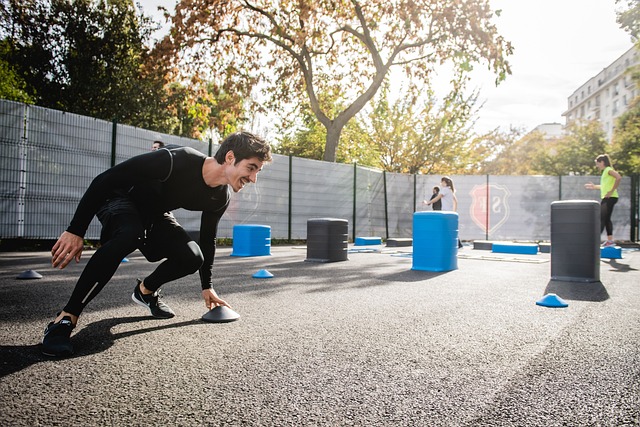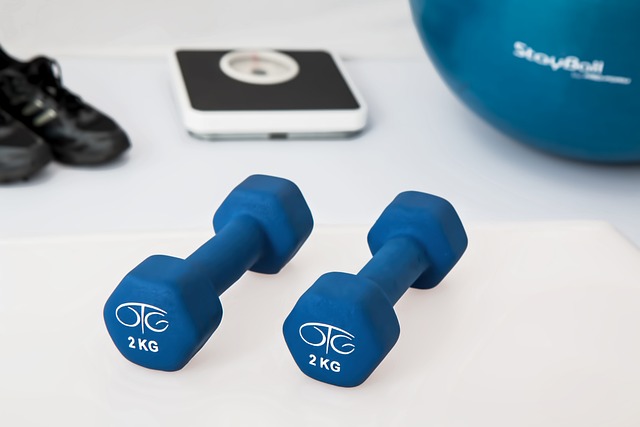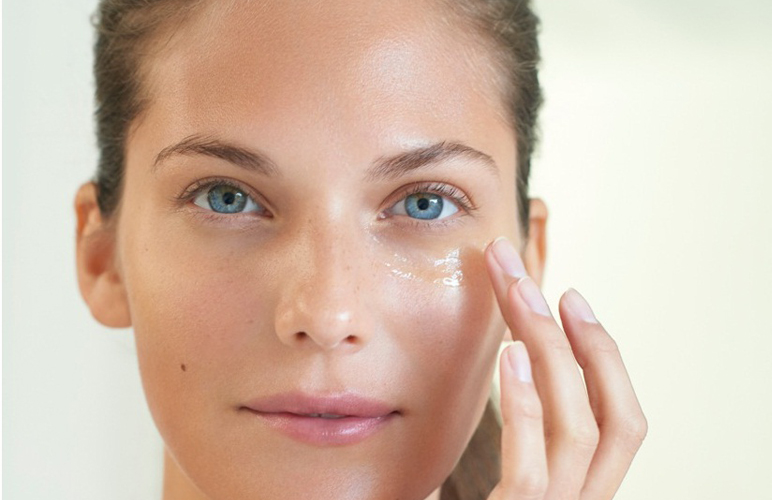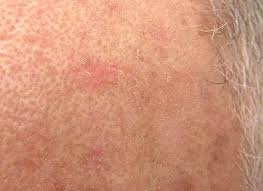Temporary factors like water retention due to muscle inflammation and increased blood flow can make you appear slightly “fatter” after working out, but it’s not actual fat gain.
After a good workout session, it is not uncommon for individuals to feel as though they look and even feel fatter than before exercising. This phenomenon can be puzzling and may cause concerns and misconceptions.
However, it is essential to note that this feeling of looking fatter after working out does not indicate gaining weight or fat. Rather, it commonly occurs due to temporary factors like heightened blood flow to muscles, water retention, and muscle inflammation.
Understanding these common concerns and misconceptions can help alleviate any anxiety or confusion about their appearance after exercise.
Here’s Why Do I Look Fatter After Working Out?

Working out is highly beneficial for our overall health and well-being. It helps us maintain a healthy weight, increase muscle tone, improve cardiovascular health, and boost our mood.
However, an intriguing phenomenon that some individuals may experience is feeling or looking fatter after working out. It is important to understand that this does not indicate failure or a reason to stop working out.
Indeed, this brief alteration in looks stems from factors like heightened blood flow to muscles, water retention, and muscle inflammation.
Once these effects subside, the benefits of working out, such as increased metabolism, improved body composition, and enhanced strength, will become more noticeable.
So, even though you may initially feel or look fuller, embracing a consistent workout routine will inevitably lead to a healthier and more toned physique. Several factors can contribute to feeling or appearing temporarily “fatter” after a workout, and here they are:
Water Retention
Water retention can give a bloated appearance of body flattening post-workout due to increased blood flow and tissue repair. Intense exercise can cause micro-tears in muscles, leading to inflammation and water retention as part of the healing process.
This can temporarily mask muscle definition, making you feel less toned.
Over time, as inflammation subsides and muscles repair, you’ll likely see improved muscle definition and a more sculpted appearance.
Muscle Inflammation
Workouts can cause micro-tears in muscle fibers, triggering inflammation and fluid accumulation around muscles, which might result in a fuller appearance. on the other hand, athletic performance enhancement through workouts is a highly effective method for body muscles and health.
However, Muscle inflammation affects your post-workout appearance in these ways:
- Bloating and Swelling: Intense exercise causes micro-damage to muscles, leading to inflammation. This can result in temporary swelling and bloating around the muscle tissue, making you feel less toned immediately after a workout.
- Disguised Definition: Inflammation masks muscle definition. As muscles repair and inflammation subsides, you’ll notice improved muscle tone and a flatter appearance due to reduced swelling and water retention.
Increased Blood Flow
Exercise increases blood flow to working muscles, which can temporarily enlarge the blood vessels and lead to a feeling of puffiness.
Glycogen Storage
Muscles store energy as glycogen, which binds to water. After a workout, muscles might store more glycogen, contributing to water retention.
However, Glycogen storage influences post-workout appearance by:
Depletion Effects: Intense exercise depletes glycogen stored in muscles, leading to reduced glycogen content.
Water Loss: Glycogen binds with water; its depletion results in water loss from muscles, causing a flatter look.
Temporary Change: This temporary flattening occurs until glycogen stores are replenished through nutrition, restoring muscle fullness and volume.
Digestive Changes
Blood flow redirection during exercise might affect digestion and lead to temporary bloating.
- Digestive changes, triggered by redirected blood flow during exercise, can temporarily cause bloating or discomfort in the abdomen.
- The body’s focus on delivering oxygen to working muscles may lead to reduced digestive efficiency, causing feelings of fullness or gas.
- These effects, while transient, might contribute to the perception of flattening after working out as the body gradually returns to its normal digestive state.
Clothing and Perception
Tight workout clothes or sensitivity to body changes might influence how you perceive your appearance.
Compression clothing can reduce bloating temporarily by providing support, while body perception might alter due to increased blood flow and muscle engagement during exercise, creating a leaner visual appearance.
Sweating and Electrolytes
- Sweating during exercise can lead to temporary dehydration and electrolyte imbalances, losing fluids and essential minerals.
- This fluid loss might create the illusion of “flattening” post-workout, but it’s important to replenish fluids and electrolytes to restore the body’s balance.
Short-Term Effect
These effects are usually short-lived and part of the body’s natural response to exercise. They typically resolve as your body recovers.
It’s important to note that any changes in appearance are often temporary and tied to natural physiological responses.
What are the Common Concerns and Misconceptions for Looking Flatter After Working Out?
For many people, staying healthy and fit is important, and regular exercise is a way to attain this goal.
While working out has numerous benefits, there are common concerns and misconceptions regarding the appearance of looking flatter after a workout.
These concerns often revolve around the idea that exercise will decrease muscle mass or a lack of desired physical changes.
Here are the Common Concerns and Misconceptions for Looking “Fatter” After Working Out:
Water Weight Worries
Misconception: Temporary water retention can be mistaken for fat gain.
Explanation: Temporary water retention is a physiological response to exercise, often due to increased blood flow and muscle repair. This might lead to a brief sensation of “fluffiness” or a slightly altered appearance.
However, it’s important to recognize that water retention is a temporary phenomenon unrelated to fat gain.
As your body recovers and hydration balances out, any perceived increase in size will likely dissipate, reaffirming that staying hydrated and maintaining regular exercise remain vital for long-term fitness.
Scale Readings
Misconception: Increased scale weight is thought to be fat gain.
Explanation: Post-workout weight gain on the scale is often due to temporary factors like water retention and glycogen storage, not actual fat gain. As muscles repair and replenish energy stores, they hold onto water and glycogen.
This can temporarily increase scale weight, masking the true fat loss and fitness progress achieved through exercise.
Appearance vs. Reality
Misconception: Feeling and appearing “fatter” post-workout is assumed to be fat gain.
Explanation: Feeling or looking “fatter” after working out is primarily due to temporary factors such as muscle inflammation, fluid retention, and increased blood flow to muscles.
These effects are transient and not indicative of fat gain. Understanding that these changes are part of the body’s natural response to exercise can alleviate concerns about body appearance and reinforce the long-term benefits of fitness efforts.
Quick Fix Expectations
Misconception: Immediate reduction in post-workout bloat is expected.
Explanation: Expecting an immediate reduction in post-workout bloat might overlook the body’s natural processes. Bloating caused by muscle inflammation and fluid retention requires time to subside as the body recovers.
Instead of seeking instant results, focus on,
- consistent hydration,
- balanced nutrition,
- and proper recovery
All of these will collectively contribute to minimizing bloat and supporting overall well-being in the long run.
Negative Self-Perception
Concern: Feeling “fatter” might affect body image.
Explanation: The sensation of being “fatter” can significantly influence body image. Societal beauty norms, comparisons with others, and psychological strain can lead to negative self-perception.
This often triggers
- distress,
- avoidance behaviors,
- and unhealthy coping strategies.
Consequently, self-esteem and mental well-being are compromised, impacting both emotional and physical health.
Avoidance of Workouts
Concern: Fear of looking “fatter” might discourage exercise.
Explanation: The fear of appearing “fatter” can hinder exercise participation due to heightened body image anxiety and negative self-perception.
Societal pressures, potential comparisons, and the vulnerability of workout attire contribute to this fear. Concerns about not achieving desired outcomes and discomfort during exercise also play a role.
Overcoming this concern requires promoting body positivity, fostering inclusive exercise spaces, and highlighting the health benefits of physical activity over appearance.
Excessive Dehydration Attempts
Concern: Overhydration or dehydration to counter perceived bloat.
Explanation: The fear of bloating can drive individuals to extremes of overhydration or dehydration. Believing that excess fluid intake causes bloating, they may consume excessive water, leading to electrolyte imbalances.
Conversely, they might drastically reduce water intake, risking dehydration and health issues. Stemming from misconceptions, these practices are potentially harmful.
Education about bloating causes and promoting balanced hydration is vital to mitigate this concern and maintain overall well-being.
In a nutshell, Hydrating properly and avoiding extremes helps maintain balanced fluid levels and supports overall health.
Lack of Understanding:
Concern: Lack of knowledge about post-workout changes can lead to unnecessary stress.
Explanation: Educating oneself about the body’s response to exercise helps dispel concerns and misconceptions.
Insufficient awareness regarding post-workout bodily changes can result in unwarranted stress. Individuals might misinterpret increased heart rate, temporary weight fluctuations, or muscle soreness as negative indicators.
This lack of knowledge about the body’s natural responses post-exercise can lead to unnecessary worry and discourage exercise continuity.
Educating people about typical post-workout effects empowers them to differentiate between normal adaptations and actual concerns, fostering a more positive and informed approach to fitness.
Finally, understanding these concerns and misconceptions can alleviate unnecessary worries and promote a healthier perspective on post-workout changes in appearance.
Tips Preventing the Flatter Look After Post-Working Out

Diverse Workouts
Engaging in a diverse range of workouts can prevent the appearance of feeling “fatter” after exercise. Incorporating various exercises promotes overall muscle toning, reduces body bloating, and improves posture.
Cardiovascular workouts enhance calorie burning, while strength training boosts metabolism.
Yoga and flexibility exercises aid in maintaining a balanced physique. This diverse approach prevents stagnation, supports body confidence, and ensures a holistic fitness routine, mitigating the perception of post-workout “fatness.”
Consistent Routine
Maintain a regular workout schedule to ensure fitness gains are sustained over time.
Maintaining a consistent workout routine prevents the appearance of feeling “fatter” post-exercise,
- stable metabolism,
- muscle tone retention,
- improved fluid balance,
- and enhanced psychological well-being.
Regular exercise sustains efficient calorie burning and muscle definition while aiding fluid circulation and reducing post-workout water retention. This promotes a positive body image, discouraging fixation on temporary changes and supporting a more balanced perception of one’s physique.
Progressive Overload
Gradually increase intensity, weight, or reps to promote muscle growth and prevent stagnation.
Progressive Overload, a fundamental principle of exercise, can help prevent the appearance of feeling “fatter” after working out by:
- Muscle Development: Progressive Overload involves gradually increasing the resistance or intensity of your workouts. This encourages muscle growth and toning, enhancing your body’s overall shape and reducing the appearance of bloating or softness.
- Metabolic Boost: Your metabolism improves as you challenge your muscles with progressively heavier weights or higher resistance.
This increased metabolic rate helps burn calories more effectively, supporting weight management and preventing the perception of post-workout “flattering” or bloating.
Balanced nutrition
Feed your body a balanced diet that includes protein, healthy fats, and carbohydrates to help recover and maintain muscle.
Balanced nutrition plays a key role in preventing the appearance of feeling “fatter” after working out:
Muscle Recovery and Toning: Adequate protein intake supports muscle repair and growth, helping to maintain a lean and toned appearance. Proper nutrition also provides essential nutrients for overall recovery, reducing the likelihood of excessive water retention or bloating.
Energy Balance: Balanced nutrition ensures you’re fueling your body appropriately for your workouts.
Consuming the right number of calories, including a mix of carbohydrates, fats, and proteins, supports energy levels during exercise and helps prevent overeating afterward, reducing the risk of a “flattering” look.
Hydration
Drink sufficient water to optimize performance, aid digestion, and support overall well-being.
Staying adequately hydrated is crucial for preventing the appearance of feeling “fatter” after working out:
Water Retention Regulation: Proper hydration helps regulate the body’s fluid balance and minimizes water retention, which can contribute to a bloated appearance.
Consistent hydration supports efficient fluid distribution and reduces the likelihood of post-workout bloating.
Metabolic Efficiency: Hydration supports metabolic processes, including the breakdown of carbohydrates and fats. When your metabolism functions optimally, it aids in managing body composition, reducing the risk of post-exercise bloating or a “flattering” look caused by fluid imbalances.
Adequate Rest
Adequate rest is essential in preventing the appearance of feeling “fatter” after exercise. Rest allows muscles to recover and repair, contributing to a toned physique.
Proper sleep supports hormonal balance, reducing the risk of water retention or bloating.
Additionally, rest aids in psychological well-being, preventing overemphasizing temporary post-workout changes. The body maintains its vitality and optimal functioning by ensuring sufficient rest, promoting a positive body image.
So, ensure quality sleep and incorporate rest days to allow muscles to recover and prevent overtraining.
FAQs
Is it common to feel heavier after working out?
Yes, feeling heavier after exercise is normal due to temporary fluid retention caused by increased blood flow and muscle inflammation.
Why does my weight increase after a workout?
The increase in weight can be attributed to water retention in muscles and tissues, as well as the temporary expansion of blood volume during exercise.
Does muscle weigh more than fat?
Yes, muscle is denser than fat, so a gain in muscle mass from working out can offset any fat loss, leading to little or no change in weight.
Will I always feel heavier after working out?
No, the temporary increase in weight is usually due to fluid retention and inflammation. Over time, consistent exercise can lead to fat loss and improved body composition.
Should I worry about weight gain post-workout?
No, post-workout weight gain is often temporary and not reflective of fat gain. Focus on long-term progress and how your clothes fit rather than daily fluctuations.
Can exercise cause muscle inflammation?
Yes, intense workouts can cause micro-tears in muscle fibers, leading to inflammation and fluid accumulation around the muscles.
How long does post-workout water retention last?
Water retention can last up to a few days, especially after intense or new workouts. It gradually subsides as your body adapts and recovers.
Does dehydration contribute to post-workout weight gain?
No, dehydration after a workout can lead to temporary weight loss due to fluid loss, not weight gain.
Conclusion
Indeed, the perception of looking fatter after working out can be attributed to various factors.
Firstly, increased muscle pump and blood flow to the muscles during exercise can temporarily cause a bloated appearance.
Additionally, hydration levels and water retention can play a role.
Moreover, focusing solely on weight and appearance can be misleading, as exercise contributes to overall health and fitness.
So, focusing on the long-term benefits of exercise rather than solely on immediate physical changes is essential.











